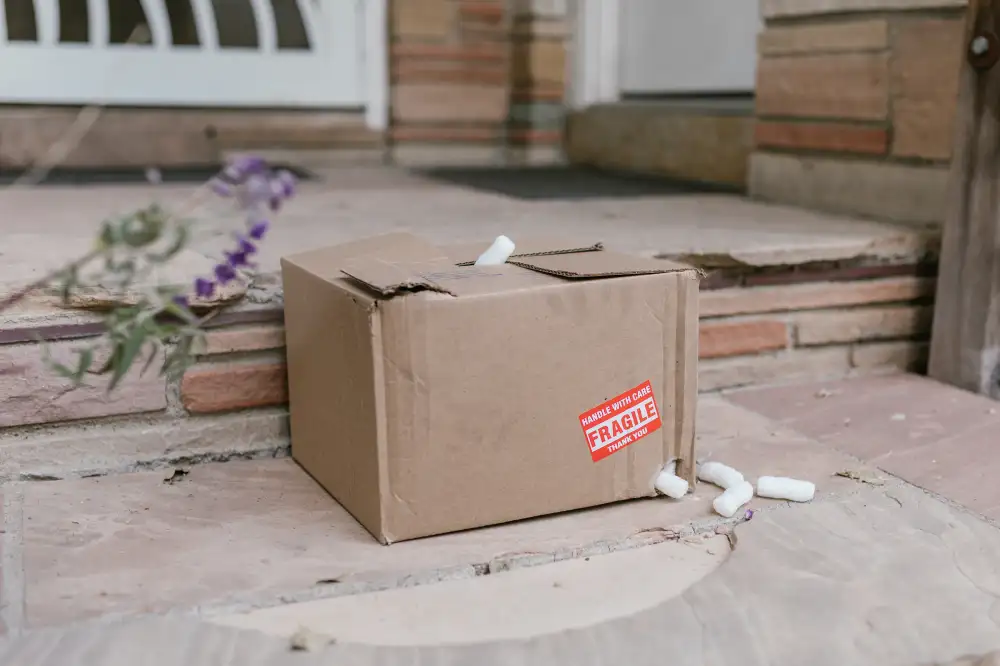Is it Safe to Microwave Styrofoam? Unveiling the Facts for a Safer Home

- What is styrofoam: Explaining the composition and properties of styrofoam
- Microwaving styrofoam: Addressing the safety concerns and potential risks
- Potential health risks: Discussing the potential release of harmful chemicals
- Microwave-safe styrofoam: Identifying specific types of styrofoam that are safe for microwaving
- Tips for microwaving styrofoam safely: Providing guidelines for using styrofoam in the microwave
- Alternatives to microwaving styrofoam: Suggesting alternative containers for heating food in the microwave
Microwaving food has become a common practice in households worldwide, but concerns have been raised about the safety of using styrofoam containers in the microwave. Styrofoam, also known as expanded polystyrene foam, is a popular material due to its lightweight and insulating properties. However, there are worries that microwaving styrofoam may release harmful chemicals into our food and pose health risks. In this article, we will delve into the facts surrounding this issue to help you make informed decisions for a safer home.
What is styrofoam: Explaining the composition and properties of styrofoam
Styrofoam, also known as expanded polystyrene (EPS), is a lightweight material commonly used for packaging and insulation. It is made from a petroleum-based plastic called polystyrene, which is derived from styrene monomers. The manufacturing process involves expanding the polystyrene beads with steam, resulting in the familiar foam-like structure.
Styrofoam has several properties that make it popular for various applications. It is an excellent insulator, providing thermal resistance and preventing heat transfer. Additionally, it is moisture-resistant and can withstand high temperatures. These qualities make it suitable for use in food containers and beverage cups.
However, it's important to note that styrofoam is not biodegradable and can persist in the environment for hundreds of years. When disposed of improperly, it can contribute to pollution and harm wildlife.
Understanding the composition and properties of styrofoam helps us evaluate its safety when exposed to microwave radiation.
Microwaving styrofoam: Addressing the safety concerns and potential risks
Microwaving styrofoam has been a topic of concern for many individuals. Styrofoam, also known as expanded polystyrene foam, is a popular packaging material due to its lightweight and insulating properties. However, there are concerns about the potential risks associated with microwaving this material.
When exposed to high temperatures, styrofoam can melt or release harmful chemicals into the food. The heat from the microwave can cause the styrofoam to break down and potentially contaminate the food with substances like styrene, a possible carcinogen.
It is important to note that not all styrofoam products are created equal. Some types of styrofoam are specifically designed for microwave use and are labeled as "microwave-safe." These containers are made from a different type of plastic that can withstand higher temperatures without releasing harmful chemicals.
To ensure safety when microwaving styrofoam, it is crucial to check for the "microwave-safe" label on the packaging. If there is no such label or if you are unsure about the safety of a particular product, it is best to transfer the food into a microwave-safe glass or ceramic container before heating.
By being aware of these safety concerns and taking necessary precautions, we can minimize potential risks associated with microwaving styrofoam and enjoy our meals in a safer manner.
Potential health risks: Discussing the potential release of harmful chemicals
Potential health risks associated with microwaving styrofoam arise from the potential release of harmful chemicals. Styrofoam is made from polystyrene, a synthetic material that can break down when exposed to high temperatures. When heated in the microwave, styrofoam can release small amounts of chemicals like styrene and benzene into the food. These chemicals have been linked to various health issues, including respiratory problems, irritation, and potential carcinogenic effects. While the levels released are generally considered safe for occasional use, it is advisable to minimize exposure by using microwave-safe alternatives whenever possible.
Microwave-safe styrofoam: Identifying specific types of styrofoam that are safe for microwaving
Microwave-safe styrofoam refers to specific types of styrofoam that are designed and tested to be safe for use in the microwave. These products are typically labeled as "microwave-safe" or have a symbol indicating their suitability for microwave use.
One common type of microwave-safe styrofoam is known as expanded polystyrene (EPS). EPS foam is made up of 98% air and 2% polystyrene, which gives it its insulating properties. It is commonly used for takeout containers, coffee cups, and disposable plates.
Another type of microwave-safe styrofoam is high-impact polystyrene (HIPS). HIPS foam has similar properties to EPS but is more rigid and durable. It is often used for packaging materials, food storage containers, and disposable cutlery.
It's important to note that not all types of styrofoam are safe for microwaving. Some styrofoam products may release harmful chemicals when heated in the microwave, posing health risks. Therefore, it's crucial to look for the "microwave-safe" label or symbol on the packaging before using styrofoam in the microwave.
By choosing microwave-safe styrofoam products, you can ensure that your food is heated safely without the risk of chemical leaching. Always follow the manufacturer's instructions and guidelines when using these products in the microwave to maintain a safer home environment.
Tips for microwaving styrofoam safely: Providing guidelines for using styrofoam in the microwave
When using styrofoam in the microwave, it's important to follow certain guidelines to ensure safety. Firstly, always check for the "microwave-safe" label on the packaging. This indicates that the styrofoam has been tested and deemed safe for use in the microwave.
Next, avoid microwaving styrofoam containers that are cracked, damaged, or have melted spots, as they can release harmful chemicals into your food. It's also recommended to remove any lids or covers made of styrofoam before microwaving.
To prevent overheating and potential melting of the styrofoam, use short cooking times and lower power settings when microwaving. Stirring or rotating the food during heating can also help distribute heat evenly and prevent hot spots.
After microwaving, allow the food to cool slightly before removing it from the styrofoam container. Be cautious as both the food and container may be hot.
By following these guidelines, you can safely use styrofoam in your microwave without compromising your health or risking chemical exposure. However, if you have concerns about using styrofoam altogether, there are alternative containers available for heating food in the microwave.
Alternatives to microwaving styrofoam: Suggesting alternative containers for heating food in the microwave
When it comes to heating food in the microwave, there are several alternatives to using styrofoam containers. One option is to use microwave-safe glass or ceramic containers. These materials are known for their ability to withstand high temperatures and are considered safe for use in the microwave. Look for containers that are labeled as "microwave-safe" or have a symbol indicating their suitability for microwave use.
Another alternative is to use microwave-safe plastic containers. Look for containers that are specifically labeled as "microwave-safe" and avoid those that are made from polystyrene or have a recycling symbol with the number 6, as these may contain styrofoam.
Additionally, you can opt for reusable silicone containers, which are flexible and heat-resistant. Silicone is generally considered safe for use in the microwave, but make sure to check the manufacturer's instructions before using them.
Lastly, consider using paper or cardboard containers designed for microwave use. These disposable options are often coated with a thin layer of wax or other materials that make them suitable for heating food in the microwave.
Remember, regardless of the container you choose, always follow the manufacturer's instructions and guidelines for safe microwaving practices.
In conclusion, microwaving styrofoam can be a cause for concern due to the potential release of harmful chemicals. While some types of styrofoam are labeled as microwave-safe, it is important to exercise caution and follow guidelines provided by manufacturers. It is advisable to avoid microwaving styrofoam containers that are not specifically designed for microwave use. If you are unsure about the safety of a particular styrofoam product, it is best to transfer your food into a microwave-safe alternative such as glass or ceramic containers. Prioritizing safety in our homes ensures a healthier environment for ourselves and our loved ones.
Published: 17. 02. 2024
Category: Home



